15 years one-stop China custom CNC machining parts factory
 176 |
Published by VMT at Aug 28 2025 | Reading Time:About 6 minutes
176 |
Published by VMT at Aug 28 2025 | Reading Time:About 6 minutes
In modern CNC machining, producing parts that are not only precise but also resistant to wear, corrosion, and extreme conditions is a constant challenge. Many industries struggle with surface degradation when using lightweight metals such as aluminum, magnesium, or titanium, especially in aerospace, automotive, and medical applications. These metals are favored for their strength-to-weight ratio, but their natural oxide layers often provide limited protection.
Micro-Arc Oxidation (MAO), also known as Plasma Electrolytic Oxidation (PEO), offers a powerful solution to this problem. By using controlled plasma discharges in an electrolyte bath, MAO transforms the surface of metals into a dense, ceramic-like coating. This coating dramatically enhances hardness, corrosion resistance, and wear properties, while maintaining the precision required for CNC machined parts. For industries seeking both lightweight performance and surface durability, MAO has become an advanced alternative to traditional anodizing or plating.
For manufacturers, engineers, and product developers working with CNC machining services, understanding MAO means unlocking new possibilities in creating parts that last longer and perform better under extreme conditions.
Micro-Arc Oxidation (MAO), also called Plasma Electrolytic Oxidation (PEO), is an advanced surface treatment that uses high-voltage plasma discharges in an electrolyte bath to form a hard, ceramic-like oxide coating on metals such as aluminum, magnesium, and titanium. This process enhances hardness, corrosion resistance, and wear properties, making it ideal for CNC machined parts.
Now that we’ve defined what Micro-Arc Oxidation is and why it matters, let’s go deeper into how the process actually works. Understanding the setup, steps, and materials involved will help you evaluate whether MAO is suitable for your CNC machined parts. In the next section, we’ll break down the MAO process, its equipment, and the science behind it.
Micro-Arc Oxidation (MAO), also known as Plasma Electrolytic Oxidation (PEO), is an advanced electrochemical surface treatment used to enhance the performance of lightweight metals. Unlike conventional anodizing, which produces a thin oxide film, MAO creates a thick, dense, and ceramic-like coating that is tightly bonded to the substrate. The process is performed in an electrolyte bath, where high-voltage electrical discharges transform the surface layer of the metal into crystalline oxide structures.
This transformation makes the treated surface significantly harder, more resistant to corrosion, and highly durable under mechanical stress. MAO coatings are especially effective on metals such as aluminum, magnesium, and titanium — all of which are widely used in CNC machined parts for industries like aerospace, automotive, energy, and medical implants. For example, an aluminum CNC component treated with MAO can achieve hardness values several times higher than standard anodized aluminum, making it much more suitable for high-wear environments.
Another benefit of MAO is its ability to integrate functional surface properties, such as hydrophobicity, antibacterial effects, or improved thermal insulation. These unique features extend the design possibilities for engineers seeking high-performance CNC machined parts. When applied correctly, MAO not only improves the lifespan of components but also reduces long-term costs in demanding applications.
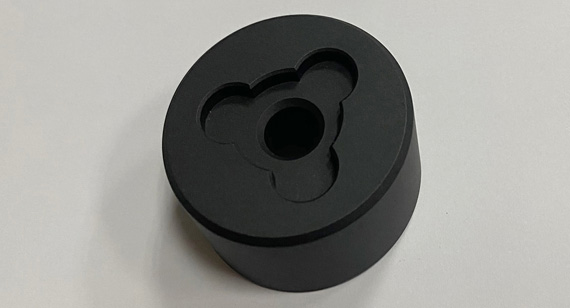
One of the most significant advantages of Micro-Arc Oxidation (MAO), also referred to as Plasma Electrolytic Oxidation (PEO), is the remarkable increase in surface hardness it provides to lightweight metals. Typically, untreated aluminum alloys have relatively low hardness, often ranging between 30–150 HV (Vickers hardness), which limits their use in high-wear or load-bearing environments. Through MAO treatment, the hardness of the surface layer can increase dramatically, reaching 1,000–2,000 HV, depending on the base material, electrolyte composition, and process parameters.
This hardness is comparable to ceramics, which is why MAO coatings are often described as “ceramic-like.” For instance, aluminum components treated with MAO can achieve hardness values up to ten times greater than conventional anodized aluminum. Titanium alloys treated with MAO coatings can also achieve extremely high hardness levels, making them ideal for aerospace, medical implants, and high-stress mechanical applications. This improvement ensures that CNC machined parts not only retain their dimensional accuracy but also withstand friction, wear, and long-term use without rapid degradation.
In real-world terms, this means an aluminum gear, housing, or connector processed with MAO will resist scratching, abrasion, and surface fatigue far better than untreated or traditionally anodized parts. The result is a longer component lifespan and improved reliability in demanding sectors such as aerospace, defense, automotive, and medical engineering.
The Micro-Arc Oxidation (MAO), or Plasma Electrolytic Oxidation (PEO), process works by applying high-voltage electrical discharges to a metal submerged in an electrolyte solution. These electrical pulses generate micro-arcs on the metal’s surface, causing localized plasma reactions that transform the surface into a hard, ceramic-like oxide layer. Unlike conventional anodizing, which relies on low-voltage oxidation, MAO creates much denser and thicker coatings with superior wear and corrosion resistance.
The process is carried out in a specialized setup consisting of several essential components:
Once the setup is complete, the MAO process follows three fundamental steps:
This carefully controlled process results in a uniform, thick, and strongly bonded micro-arc oxidation coating, making it especially effective for CNC machined parts used in demanding environments.

In Micro-Arc Oxidation (MAO), also known as Plasma Electrolytic Oxidation (PEO), the electrolyte is more than just a conductive medium. It actively influences the chemical composition, structure, and performance of the final coating. Depending on the additives and pH balance, the electrolyte can enhance wear resistance, improve corrosion protection, and even introduce functional characteristics such as antibacterial or hydrophobic properties. By carefully adjusting the electrolyte formulation, CNC machining shops can customize coatings to meet the exact needs of industries like aerospace, automotive, or medical implants.
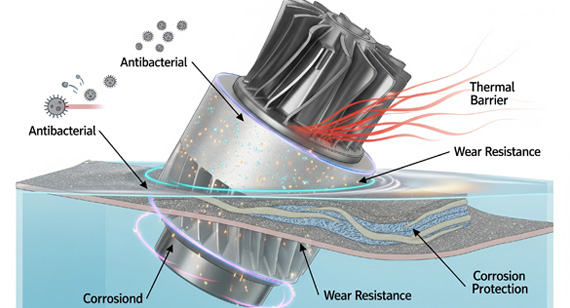
Wear Resistance and Hardness
Electrolytes enriched with silicates, phosphates, or aluminates produce coatings with high hardness values (up to 1,000–2,000 HV), giving them exceptional wear resistance. The plasma discharges integrate these compounds into the coating, resulting in a ceramic-like layer that protects CNC machined parts against abrasion and surface fatigue. This property is especially important in automotive and aerospace parts, where components endure repeated mechanical stress.
High Strain Tolerance
One unique property of MAO coatings is their ability to combine hardness with elasticity. Electrolyte compositions containing calcium or rare-earth elements can enhance crack resistance and strain tolerance. This ensures that coatings do not become brittle, a common weakness in traditional ceramic coatings. For applications involving vibration, impact, or cyclic loading, this flexibility is vital to maintaining part longevity.
Corrosion Resistance
Electrolyte formulations containing phosphates and fluorides can drastically improve corrosion resistance, making MAO coatings highly effective in marine, oil and gas, or medical environments. These elements form barrier layers that protect against chloride ion penetration, which is a leading cause of corrosion in metals such as aluminum and magnesium. CNC machined parts treated with such coatings remain durable even under harsh, corrosive conditions.
Dielectric Breakdown Strength
The electrolyte also contributes to the electrical insulating properties of the MAO coating. By introducing silicate-based compounds, coatings can achieve high dielectric breakdown strength, making them suitable for electronic housings, insulating layers, or aerospace electrical components. This property provides not only safety but also multifunctionality in high-tech CNC machined parts.
Thermal Barrier Coating
By tailoring electrolytes with zirconium or titanium compounds, MAO coatings can achieve strong thermal barrier effects. These coatings resist heat transfer and can withstand extreme thermal cycling, making them valuable in aerospace turbines, automotive engines, and high-temperature energy systems. For CNC machined parts operating under fluctuating heat loads, thermal barrier coatings ensure stability and extended lifespan.
Photocatalytic Surface Coating
Adding titanium dioxide (TiO₂) or similar compounds to the electrolyte can result in photocatalytic coatings. These surfaces have self-cleaning and pollution-degrading properties, which are increasingly relevant in environmental engineering and architectural applications. This means CNC machined parts treated with MAO can provide added value beyond durability, contributing to sustainability goals.
Antibacterial Properties
Electrolytes containing silver, copper, or zinc ions can create MAO coatings with antibacterial properties. This is especially useful in medical implants, surgical instruments, and food-machining equipment. These coatings prevent bacterial growth, ensuring hygiene and patient safety while extending the functional lifespan of CNC machined medical parts.
Hydrophobic Properties
Hydrophobic or water-repellent surfaces can be engineered through specific electrolyte modifications. Such coatings prevent water penetration and reduce surface fouling, making them ideal for outdoor applications, marine components, or architectural metals. For CNC machining clients, this property translates into reduced maintenance costs and improved reliability in humid or wet environments.
Environmentally Friendly
Unlike some traditional coating processes that involve toxic chemicals or heavy metals, MAO electrolytes are generally water-based and environmentally friendly. Many formulations are designed to minimize waste and reduce environmental impact. This makes MAO a sustainable choice for industries seeking greener manufacturing practices while maintaining high-performance standards for CNC machined parts.
Table: Role of the Electrolyte in Micro-Arc Oxidation (MAO/PEO)
| Property |
Electrolyte Influence |
Effect on CNC Machined Parts |
| Wear Resistance & Hardness |
Silicate, phosphate, aluminate additives | Creates ceramic-like hardness (up to 1,000–2,000 HV), prevents abrasion and surface fatigue |
| High Strain Tolerance |
Calcium, rare-earth element additions | Enhances crack resistance and flexibility under vibration or cyclic loading |
| Corrosion Resistance |
Phosphates, fluorides | Strong barrier against chloride ions, ideal for marine and oil/gas environments |
| Dielectric Breakdown Strength |
Silicate-based compounds | Improves insulation, useful for electronic housings and aerospace applications |
| Thermal Barrier Coating |
Zirconium, titanium compounds | Resists extreme heat and thermal cycling, used in turbines and engines |
| Photocatalytic Properties |
Titanium dioxide (TiO₂) | Provides self-cleaning and pollution-degrading surfaces |
| Antibacterial Properties |
Silver, copper, zinc ions | Prevents bacterial growth in medical implants, surgical instruments, food equipment |
| Hydrophobic Properties |
Modified electrolyte composition | Water-repellent surfaces, prevents fouling in marine/architectural use |
| Environmentally Friendly |
Water-based, low-toxicity electrolytes | Reduces waste and meets sustainability regulations |
The performance of a Micro-Arc Oxidation (MAO), or Plasma Electrolytic Oxidation (PEO), coating depends heavily on process parameters. Unlike simple anodizing, MAO requires precise control of electrical and chemical factors to achieve the desired surface properties. Variables such as voltage, current density, frequency, duty cycle, electrolyte composition, additives, and pH all influence the final coating’s hardness, thickness, corrosion resistance, and functional characteristics. By adjusting these parameters, CNC machining shops can tailor micro-arc oxidation coatings for applications ranging from aerospace and automotive to biomedical implants.
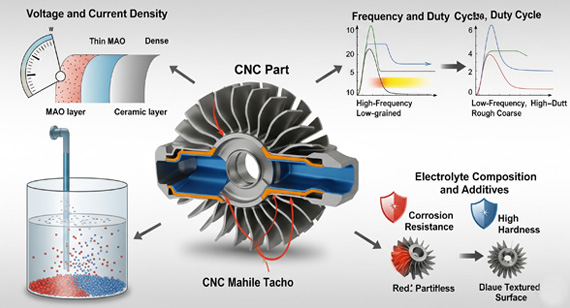
Voltage and Current Density
The applied voltage and current density are among the most critical factors in MAO. At lower voltages, only thin and porous coatings form, offering limited protection. As voltage increases (typically 200–600V depending on the metal), plasma micro-discharges intensify, producing thicker, denser, and harder ceramic layers. Similarly, current density influences energy input: higher densities promote faster coating growth but may also increase surface roughness. For aluminum CNC machined parts, carefully balanced voltage ensures coatings achieve both hardness and uniformity without micro-cracking.
Frequency
The frequency of electrical pulses determines how plasma discharges are distributed across the surface. Low-frequency operation produces larger, more intense discharges, leading to thicker but rougher coatings. High-frequency operation results in smaller, more uniform discharges, creating smoother coatings with finer microstructures. In CNC machining applications, where surface finish affects precision fitting, high-frequency MAO may be preferred for medical or aerospace parts requiring tighter tolerances.
Duty Cycle
The duty cycle represents the ratio of pulse “on-time” to “off-time.” A high duty cycle delivers more continuous energy, forming thicker coatings quickly but with the risk of overheating or micro-cracking. A lower duty cycle slows down coating growth but enhances uniformity and reduces defects. For CNC machined parts where fatigue resistance is critical, a controlled duty cycle ensures coatings remain tough and durable without compromising dimensional stability.
Electrolyte Composition
The chemical makeup of the electrolyte directly determines coating properties. For example, silicate-based electrolytes improve hardness, phosphate-based systems enhance corrosion resistance, and zirconium-containing electrolytes provide thermal barrier effects. By adjusting compositions, CNC machining shops can produce coatings that meet industry-specific needs, whether it’s improving wear resistance in automotive gears or enhancing biocompatibility in medical implants.
Additives
Additives such as nanoparticles, rare-earth elements, or organic compounds can be introduced into the electrolyte to further enhance coating properties. For instance, silver or zinc ions create antibacterial coatings, while TiO₂ nanoparticles improve photocatalytic and self-cleaning behavior. Additives make MAO versatile, enabling CNC machining services to supply parts with tailored performance characteristics across industries.
pH
The pH level of the electrolyte affects reaction stability and coating uniformity. Acidic electrolytes tend to accelerate dissolution, which can thin or weaken the coating. Alkaline electrolytes are generally preferred, as they promote steady growth of dense oxide layers. Maintaining an optimal pH is essential for ensuring coating consistency, especially in large production runs where many CNC machined parts are processed simultaneously.
Note: Even slight variations in pH or additives can significantly alter coating performance. Be sure to verify process stability when choosing a CNC machining shop for MAO-treated components.
Table: Key Process Parameters Affecting MAO Coating Quality
| Parameter |
Description |
Effect on Coating Quality |
Impact on CNC Machined Parts |
| Voltage & Current Density |
Electrical energy applied during MAO (200–600V typical) | Higher values increase coating thickness and hardness but risk roughness and cracking | Balances hardness and smoothness for precision CNC parts |
| Frequency |
Pulse rate of applied current | Low frequency = thicker, rougher coatings; High frequency = smoother, finer coatings | High frequency preferred for aerospace/medical CNC parts with tight tolerances |
| Duty Cycle |
Ratio of pulse on-time vs. off-time | High duty cycle = rapid growth but more defects; Low duty cycle = slower, uniform coatings | Ensures coatings remain durable without compromising dimensional accuracy |
| Electrolyte Composition |
Type of chemical solution (silicate, phosphate, zirconium, etc.) | Dictates hardness, corrosion resistance, thermal barrier effects | Customized coatings for industry-specific applications (e.g., aerospace or medical implants) |
| Additives |
Nanoparticles, rare-earth elements, metal ions | Adds antibacterial, photocatalytic, or self-cleaning properties | Tailors CNC machined parts for specialized uses like medical or architectural |
| pH |
Acidity or alkalinity of electrolyte | Acidic pH = weak coatings; Alkaline pH = strong, dense coatings | Stable pH ensures consistent quality across large production runs |
Micro-Arc Oxidation (MAO), also known as Plasma Electrolytic Oxidation (PEO), produces ceramic-like oxide films on light metals such as aluminum, magnesium, and titanium. These coatings provide exceptional hardness, wear resistance, corrosion protection, and functional surface properties. The unique combination of ceramic strength and process flexibility makes MAO coatings highly suitable for CNC machined parts across industries like aerospace, automotive, defense, electronics, and biomedical engineering.
Below we detail the key properties of MAO coatings and how they benefit industrial applications.

Coverage
MAO coatings provide uniform coverage even on complex geometries, sharp edges, and deep cavities. Unlike conventional anodizing, MAO coatings can grow evenly on intricate CNC-machined surfaces, ensuring reliable performance across the entire component.
Wear Resistance and Hardness
The ceramic layer produced by MAO exhibits hardness values between 1000–2000 HV, comparable to corundum (α-Al₂O₃). This results in superior wear resistance, making it ideal for parts exposed to friction, sliding, or abrasive environments, such as gears, pistons, and aerospace landing gear components.
Corrosion Resistance
MAO films are highly dense and chemically stable, providing outstanding resistance against saltwater, acids, and industrial chemicals. This makes them particularly valuable for marine equipment, medical implants, and aerospace structures where long-term durability is required.
High Strain Tolerance
Despite being ceramic-based, MAO coatings exhibit excellent adhesion and strain tolerance, meaning they resist cracking or peeling even under mechanical stress or thermal expansion. This ensures CNC machined parts maintain integrity in demanding operating conditions.
Antibacterial Properties
By incorporating silver, copper, or zinc nanoparticles during machining, MAO coatings gain antibacterial and antifungal functionality. This property is crucial in medical implants, surgical instruments, and food-machining equipment, where hygiene and biocompatibility are essential.
Dielectric Breakdown Strength
MAO films are excellent electrical insulators, with dielectric strengths often exceeding 1000 V/μm. This makes them suitable for electronic housings, insulators, and aerospace electrical components, where preventing current leakage is critical.
Environmentally Friendly
Unlike traditional coatings that use hazardous chemicals (e.g., chromates), MAO relies on aqueous electrolytes and produces minimal waste. This eco-friendly process supports sustainable CNC machining services and complies with international environmental regulations such as RoHS and REACH.
Photocatalytic Surface Coating
By adding TiO₂ phases, MAO coatings can gain photocatalytic activity, enabling them to self-clean, break down organic pollutants, and improve sterilization. Applications include architectural aluminum panels, medical devices, and air-purifying systems.
Thermal Shock Resistance
MAO coatings withstand rapid temperature changes without cracking or spalling. This makes them ideal for aerospace engine parts, automotive cylinders, and heat exchangers, where sudden heating and cooling cycles are unavoidable.
Porosity
The surface of MAO films contains a controlled microporous structure, which enhances lubricant retention, adhesion of secondary coatings, and bonding with polymers or paints. This property is particularly useful in CNC parts that require composite surface treatments.
Here’s a clear table version of Micro-Arc Oxidation (MAO) Film Properties:
| Property |
Description |
Benefit |
| Coverage |
Produces uniform coatings, even on complex shapes. | Full protection without weak spots. |
| Wear Resistance & Hardness |
Surface hardness up to 1000–2000 HV, resistant to abrasion. | Extends service life of parts. |
| Corrosion Resistance |
Dense oxide layer prevents oxidation and chemical attack. | Ideal for aerospace, marine, and biomedical use. |
| High Strain Tolerance |
Coating maintains adhesion under mechanical stress. | Prevents cracking or peeling. |
| Antibacterial Properties |
Incorporation of elements like Ag or Cu in coating inhibits microbial growth. | Useful for medical implants and food-machining tools. |
| Dielectric Breakdown Strength |
High electrical insulation due to ceramic-like layer. | Effective for electrical and electronic applications. |
| Environmentally Friendly |
Water-based electrolytes with no harmful chemicals. | Complies with green manufacturing standards. |
| Photocatalytic Surface Coating |
TiO₂ phase in coating enables UV-induced cleaning/self-cleaning. | Applications in optics, architecture, and biomedical devices. |
| Thermal Shock Resistance |
Can withstand rapid heating and cooling without failure. | Useful in engines and high-temperature parts. |
| Porosity |
Controlled porosity improves adhesion and functionality. | Enhances lubrication, biomedical integration, or catalytic properties. |
Micro-Arc Oxidation (MAO), also known as Plasma Electrolytic Oxidation (PEO), is a surface modification technique primarily applied to valve metals (metals that form stable, dense oxide layers). These include aluminum, magnesium, titanium, zirconium, tantalum, niobium, and their alloys. MAO improves properties such as wear resistance, corrosion resistance, hardness, dielectric strength, and biocompatibility, making it suitable for industries like aerospace, automotive, electronics, biomedical, and marine engineering.
Grades: 2xxx, 5xxx, 6xxx, 7xxx series (e.g., 2024, 5052, 6061, 7075).
Key Properties:
Applications: Aerospace structures, automotive parts, electronic housings, heat exchangers, and decorative finishes.
2. Magnesium Alloys
Grades: AZ91, WE43, ZK60, AM60.
Key Properties:
Applications: Aerospace lightweight components, automotive transmission parts, biomedical implants (temporary fixation devices).
Grades: Ti-6Al-4V, Ti-6Al-7Nb, commercially pure Ti.
Key Properties:
Applications: Medical implants, aerospace engine parts, marine equipment, and chemical machining tools.
Grades: Cu-Al, Cu-Mn, Cu-Zr alloys.
Key Properties:
Applications: Electrical contacts, heat exchangers, antifouling coatings for marine use.
5. Zirconium Alloys
Grades: Zr-702, Zr-705, Zr-Nb alloys.
Key Properties:
Applications: Nuclear reactor components, chemical industry equipment, biomedical implants.
6. Tantalum Alloys
Grades: Ta-10W, Ta-Nb, pure tantalum.
Key Properties:
Applications: Biomedical implants (e.g., bone repair), electronic capacitors, chemical machining equipment.
7. Niobium
Grades: Pure Nb, Nb-Ti alloys.
Key Properties:
Applications: Biomedical implants, electronic components, superconducting materials.
Materials Suitable for Micro-Arc Oxidation (MAO)
| Material |
Grades (Examples) |
Key Properties After MAO |
Applications |
| Aluminum Alloys |
2xxx (Al-Cu), 5xxx (Al-Mg), 6xxx (Al-Mg-Si), 7xxx (Al-Zn-Mg-Cu) | High hardness, wear resistance, excellent corrosion protection, thermal barrier properties | Aerospace structures, automotive components, defense equipment, consumer electronics housings |
| Magnesium Alloys |
AZ91, AM60, WE43, ZK60 | Lightweight, improved corrosion resistance, enhanced hardness, biocompatibility | Automotive parts, aerospace applications, biomedical implants, lightweight electronics |
| Titanium Alloys |
Ti-6Al-4V, Ti-6Al-7Nb, Ti-15Mo | Excellent biocompatibility, high corrosion resistance, wear resistance, antibacterial potential | Medical implants, aerospace fasteners, sports equipment, marine components |
| Copper Alloys |
Cu-Zn (Brass), Cu-Al, Cu-Be | Improved surface hardness, corrosion resistance, electrical insulation, antibacterial properties | Electrical components, heat exchangers, marine fittings, antimicrobial surfaces |
| Zirconium Alloys |
Zircaloy-2, Zircaloy-4 | Superior corrosion resistance (especially in nuclear environments), good wear resistance, thermal stability | Nuclear fuel cladding, chemical machining equipment, biomedical applications |
| Tantalum Alloys |
Ta-10W, Ta-Nb alloys | Outstanding corrosion resistance, biocompatibility, dielectric properties | Medical implants, capacitors, aerospace parts, chemical equipment |
| Niobium |
Nb-1Zr, Nb-Ti alloys | High-temperature stability, corrosion resistance, superconducting potential | Superconducting magnets, biomedical implants, aerospace structures, electronic components |
Micro-Arc Oxidation (MAO), also known as Plasma Electrolytic Oxidation (PEO), is an advanced surface treatment technology used mainly on light metals such as aluminum, magnesium, and titanium alloys. By creating a ceramic-like oxide film under high-voltage plasma discharge, MAO significantly improves the performance of base materials in demanding applications. Like any machining technology, MAO has both advantages and limitations, which should be carefully considered when selecting it for industrial or engineering use.

Advantages of Micro-Arc Oxidation
1. Comprehensive Coverage
2. High Strain Tolerance
3. Excellent Corrosion Resistance
4. Dielectric Properties
5. Thermal Barrier
6. Other Advantages
Disadvantages of Micro-Arc Oxidation
High Energy Consumption
Surface Roughness
Limited to Certain Materials
Thickness Limitations
Cost Factors
Process Complexity
Here’s a table summarizing the advantages and disadvantages of Micro-Arc Oxidation (MAO / PEO):
| Category |
Details |
| Advantages | |
| Comprehensive Coverage | Provides uniform, adherent coatings over complex geometries, internal surfaces, and edges. |
| High Strain Tolerance | The ceramic layer has excellent adhesion and flexibility, resisting cracking under mechanical stress. |
| Excellent Corrosion Resistance | Forms stable oxide layers (Al₂O₃, TiO₂, MgO, etc.) that protect against aggressive environments, including marine and chemical exposure. |
| Dielectric Properties | Produces insulating coatings with high dielectric breakdown strength, ideal for electronic and electrical applications. |
| Thermal Barrier | Ceramic coatings act as effective thermal barriers, improving heat resistance and reducing thermal fatigue. |
| Wear Resistance & Hardness | Achieves hardness levels up to 1500–2000 HV, significantly improving wear and scratch resistance. |
| Environmentally Friendly | Uses aqueous electrolytes (silicate, phosphate, aluminate, etc.), avoiding toxic chemicals like hexavalent chromium. |
| Functional Properties | Can achieve hydrophobic, antibacterial, and photocatalytic surfaces, extending its use in medical and environmental applications. |
| Scalability | Applicable to both small components and large industrial parts. |
| Disadvantages | |
| High Energy Consumption | Requires high voltages (200–600 V or more), leading to high power consumption. |
| Process Complexity | Needs precise control of voltage, current density, frequency, duty cycle, and electrolyte composition. |
| Limited Material Range | Primarily suitable for valve metals (Al, Mg, Ti, Zr, Nb, Ta, etc.), not applicable to steels or non-valve metals. |
| Porosity Issues | Coatings can have high porosity, sometimes requiring post-treatment (sealing or impregnation) for improved performance. |
| Surface Roughness | The plasma discharges create rough surfaces, which may be undesirable for some precision applications. |
| Equipment Cost | Requires specialized power supplies, cooling, and electrolyte management systems, increasing capital investment. |
| Coating Thickness Control | Achieving uniform thickness can be challenging, especially on large or complex parts. |
| Post-Processing Needed | Sometimes additional treatments (sealing, polishing, or painting) are required for optimal performance. |
Micro-Arc Oxidation (MAO), also known as Plasma Electrolytic Oxidation (PEO), is a surface treatment technology that uses high-voltage discharges in an electrolyte to form ceramic oxide coatings on metals such as aluminum, magnesium, titanium, and their alloys. The quality, properties, and performance of the MAO coatings are largely influenced by various process variables.
Electrolyte Composition
Voltage and Current Density
Pulse Mode and Frequency
Processing Time
Workpiece Materials
Substrate type strongly affects coating formation:
Alloying elements influence discharge behavior and oxide structure.
Micro-Arc Oxidation (MAO), also called Plasma Electrolytic Oxidation (PEO), produces hard, dense, and corrosion-resistant ceramic oxide coatings on lightweight metals such as aluminum, magnesium, and titanium. Its unique ability to combine wear resistance, corrosion protection, thermal stability, and biocompatibility makes it suitable for a wide range of industries. Below are the major application fields.
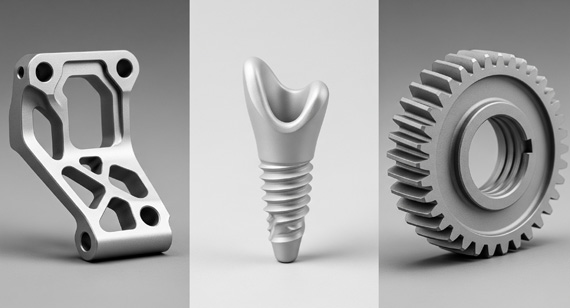
Aerospace
Medical Implants
Oil and Gas
Textiles
Architectural
Food and Beverage
Decorative
Here’s a clear table summarizing the Applications of Micro-Arc Oxidation (MAO):
| Industry |
Applications of MAO |
Benefits Provided by MAO Coatings |
| Automotive |
Engine parts, pistons, cylinders, brake components | Enhanced wear resistance, heat resistance, and extended lifespan |
| Aerospace |
Aircraft structural components, turbine blades, landing gear | High strength-to-weight ratio, thermal barrier protection, corrosion resistance |
| Medical Implants |
Titanium implants, dental fixtures, orthopedic screws | Biocompatibility, antibacterial surface, improved bone integration |
| Oil and Gas |
Drilling tools, pump components, valves, pipelines | Excellent corrosion resistance, wear resistance, long-term durability in harsh environments |
| Textiles |
Rollers, guides, machinery components | Reduced friction, wear resistance, extended service life |
| Architectural |
Aluminum building panels, outdoor structures, decorative finishes | Corrosion resistance, UV stability, weather resistance, attractive surface finish |
| Food/Beverage |
Processing equipment, tanks, mixers, containers | Corrosion resistance, food-safe coatings, easy cleaning |
| Decorative |
Consumer goods, luxury items, jewelry, electronics casings | Aesthetic appeal, color variation, scratch resistance, long-term durability |
Surface treatment processes are widely used in manufacturing industries to enhance the durability, appearance, and performance of metal components. By modifying surface properties, these processes can improve corrosion resistance, wear resistance, and even biocompatibility in specialized applications. Among the many methods available, Micro-Arc Oxidation (MAO), Anodizing, and Metal Plating stand out as commonly applied technologies, each with its unique characteristics and areas of use.
Micro-Arc Oxidation (MAO)
Micro-Arc Oxidation is an advanced electrochemical process applied mainly to light metals such as aluminum, titanium, and magnesium. It creates a hard, dense ceramic oxide coating with excellent wear resistance, thermal stability, and corrosion protection. MAO is especially valuable in high-performance industries such as aerospace, automotive, and biomedical applications.
Anodizing is an electrochemical surface treatment mainly used for aluminum and its alloys. It increases the thickness of the natural oxide layer, enhancing corrosion resistance and allowing for dyeing to improve aesthetic appeal. Anodized layers are relatively thin compared to MAO coatings but are widely used in architectural, decorative, and consumer product applications due to their cost-effectiveness.
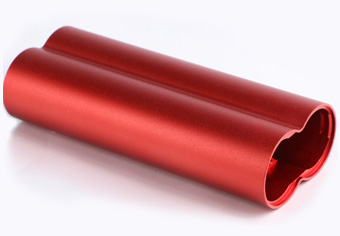
Metal plating involves depositing a thin layer of metal (such as nickel, chrome, or gold) onto the surface of a component through electroplating or electroless plating. This process enhances corrosion resistance, wear resistance, electrical conductivity, and decorative appeal. Metal plating is extensively used in electronics, jewelry, automotive parts, and industrial components requiring specific functional or aesthetic properties.
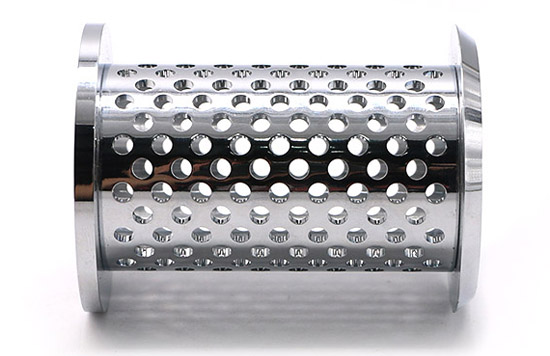
Other Types of Surface Treatment Processes – Comparison Table
| Process |
Base Materials |
Coating Thickness |
Hardness |
Corrosion Resistance |
Wear Resistance |
Cost Level |
Applications |
| Micro-Arc Oxidation (MAO) |
Aluminum, Titanium, Magnesium | 10 – 200 µm | Very high (up to ~2000 HV) | Excellent (due to ceramic oxide) | Excellent | High | Aerospace, automotive, medical implants, oil & gas |
| Anodizing |
Mainly Aluminum | 5 – 50 µm | Moderate (~200–400 HV) | Good (depends on sealing) | Moderate | Low–Medium | Architectural, decorative, consumer electronics |
| Metal Plating |
Steel, Aluminum, Copper, Alloys | 1 – 50 µm (varies by method) | Varies (depends on metal: Ni, Cr, Au, etc.) | Good to excellent (depends on plating metal) | Good | Medium–High | Electronics, jewelry, automotive, industrial tools |
At VMT CNC Machining Factory, we specialize in providing high-precision CNC machining services combined with advanced surface treatment technologies such as Micro-Arc Oxidation (MAO). This ensures that your aluminum, magnesium, and titanium CNC machined parts are not only dimensionally accurate but also engineered to withstand the toughest working conditions.
With years of experience in CNC machining and MAO surface treatment, VMT delivers coatings that significantly improve:
By integrating CNC machining precision with Micro-Arc Oxidation expertise, VMT offers complete end-to-end solutions — from raw material selection and machining to surface protection and finishing. Whether you need prototypes or large-scale production runs, our team ensures consistency, reliability, and superior performance.
Partner with VMT CNC Machining to enhance the durability, functionality, and value of your components with MAO surface treatment services.
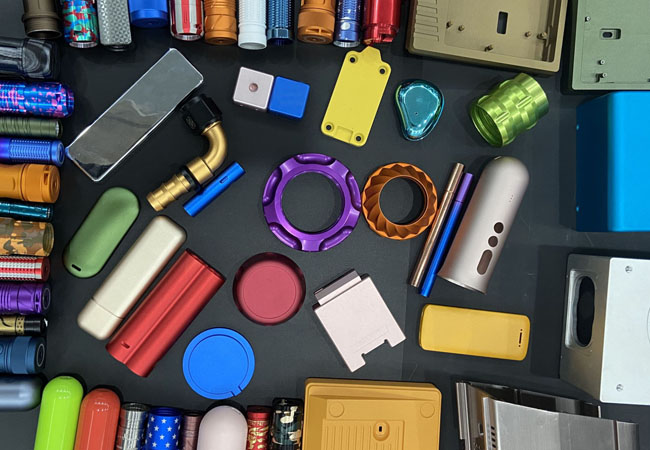
Micro-Arc Oxidation (MAO) has emerged as a cutting-edge surface treatment technology that transforms lightweight metals such as aluminum, magnesium, and titanium into high-performance engineering materials. By applying controlled high-voltage plasma discharges in an electrolyte, MAO creates dense ceramic oxide films with excellent hardness, wear resistance, corrosion protection, and thermal stability.
The quality of MAO coatings is strongly influenced by key process parameters, including electrolyte composition, voltage, current density, pulse frequency, and machining time. These factors determine the film thickness, adhesion, porosity, and surface morphology, which directly impact performance in real-world applications.
Compared with conventional treatments like anodizing or metal plating, MAO provides a more robust protective layer capable of withstanding extreme mechanical, chemical, and thermal environments. However, it also involves higher equipment costs, longer machining times, and increased energy consumption, which must be carefully considered when selecting the most suitable surface treatment method.
Today, MAO finds applications across a wide range of industries — from automotive engine parts, aerospace components, and biomedical implants to oil and gas tools, textile machinery, and decorative finishes. Its versatility and ability to meet demanding engineering requirements make it a preferred choice in situations where durability, reliability, and safety are critical.
In conclusion, MAO is not just a surface treatment — it is a technology that enables innovation in material performance. As industries increasingly move toward lightweight metals and advanced engineering solutions, MAO will continue to play a central role in extending the life, reliability, and functionality of critical components.
What Materials Can Be Treated with Micro-Arc Oxidation?
Micro-Arc Oxidation (MAO) is mainly applied to light metals such as aluminum, magnesium, and titanium alloys. These materials form dense ceramic-like oxide layers that improve corrosion resistance, wear resistance, and surface performance.
What Colors and Surface Effects Can Be Achieved with Micro-Arc Oxidation?
MAO coatings typically appear in white, gray, brown, or black, depending on the alloy composition and electrolyte solution. Some decorative effects, such as matte or textured finishes, can also be achieved, making MAO suitable for both functional and aesthetic applications.
How Does Micro-Arc Oxidation Compare to Anodizing or Powder Coating in Terms of Corrosion Protection?
Is Micro-Arc Oxidation the Same as Plasma Electrolytic Oxidation?
Yes. Micro-Arc Oxidation (MAO) and Plasma Electrolytic Oxidation (PEO) are different names for the same surface treatment process. Both describe the high-voltage electrochemical technique that creates ceramic oxide coatings on light alloys.
What is MAO Coating?
An MAO coating is a ceramic oxide layer produced on the surface of aluminum, magnesium, or titanium alloys using plasma discharge in an electrolyte solution. It enhances hardness, corrosion resistance, thermal stability, and electrical insulation.
What is Micro-Arc Oxidation of Magnesium?
When applied to magnesium alloys, MAO creates a dense ceramic oxide coating that protects against severe corrosion, especially in marine and automotive applications. Since magnesium is highly reactive, MAO is one of the most effective treatments to extend its service life.
What is the Rockwell Hardness of Nickel-Titanium Alloy?
Nickel-Titanium (NiTi or Nitinol) alloys typically have a Rockwell hardness of 33–36 HRC, depending on composition and machining. However, their strength lies in superelasticity and shape memory effect rather than pure hardness.
How Does the Strength of Nickel-Titanium Alloy Compare to Steel?
Nickel-Titanium alloys have lower hardness than hardened steels but are valued for their elastic recovery, fatigue resistance, and biocompatibility. While steel is stronger in terms of hardness and tensile strength, NiTi excels in flexibility and resilience, especially in medical and aerospace uses.
Which Metal Has the Highest Rockwell Hardness?
Tungsten carbide and boron carbide are among the hardest known materials, reaching Rockwell hardness values above 70 HRC. Among pure metals, tungsten and chromium rank among the hardest.
What is PEO Coating?
PEO coating (Plasma Electrolytic Oxidation coating) is another term for Micro-Arc Oxidation. It describes the same process that forms a ceramic-like oxide layer on light metals for enhanced durability and performance.
What is the Difference Between Electrocoagulation and Electrooxidation?
They serve completely different applications — one for environmental engineering, the other for surface treatment/material science.
What is Plasma Electrolytic Oxidation of Titanium?
PEO (or MAO) of titanium produces a thick, hard oxide ceramic layer on the surface of titanium alloys. This coating enhances corrosion resistance, wear resistance, and biocompatibility, making it especially valuable in medical implants, aerospace, and high-performance components.
